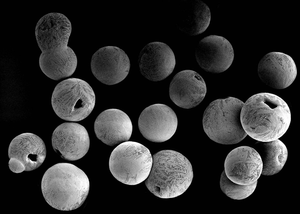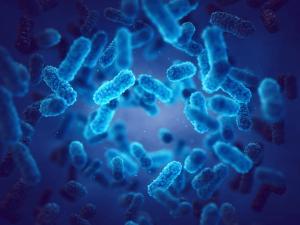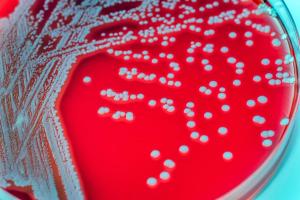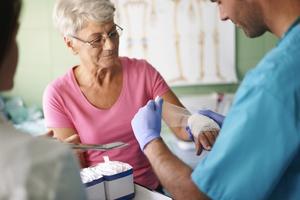OUR TECHNOLOGY HAS IMPORTANT APPLICATIONS IN HUMAN MEDICINE
Antimicrobials are the most widely used therapeutic drugs worldwide. They have revolutionised medicine, farming and agriculture, and veterinary care, and are used in many other industries including commercial paint formulations. However, their overuse, particularly in the case of antibiotics, has rendered them less effective through the rise of antimicrobial resistance (AMR). By 2050, AMR is forecasted to cause 10M deaths per annum resulting in a potential US$100 trillion shock to the global economy. Consequently, there is a need for “on demand” antibiotic-free solutions for microbial eradication to eliminate the growing problem of AMR in healthcare and in our environment.

THE SPREAD OF ANTIBIOTIC-RESISTANT PATHOGENS REQUIRES NEW TREATMENTS
Small molecule precursor compounds that produce oxidative biocides with well-established antimicrobial properties could provide a range of new therapeutic products to combat resistant infections.
The aim is a targeted delivery and controlled release of a peroxygen donor (sodium percarbonate) combined with an acetyl donor to deliver local antimicrobial activity via a dynamic equilibrium mixture of hydrogen peroxide and peracetic acid.

Entrapment of the pre-cursor compounds into hierarchically structured degradable microparticles was achieved using an innovative dry manufacturing process involving thermally induced phase separation (TIPS) that circumvented compound decomposition associated with conventional microparticle manufacture. The microparticles provided controlled release of hydrogen peroxide and peracetic acid that led to rapid and sustained killing of multiple drug-resistant organisms (methicillin-resistant Staphylococcus aureus and carbapenem-resistant Escherichia coli) without associated cytotoxicity in vitro nor intracutaneous reactivity in vivo. The results from this study demonstrate for the first time that microparticles loaded with acetyl and peroxygen donors retain their antimicrobial activity whilst eliciting no host toxicity. In doing so, it overcomes the detrimental effects that have prevented oxidative biocides from being used as alternatives to conventional antibiotics.

Human Studies
There is an urgent need to find alternatives to antibiotics as the ones developed are susceptible to resistance and pose a significant risk to human health. We have demonstrated, for the first time, it is possible to deliver peracetic acid and hydrogen peroxide with localised, non-toxic antimicrobial activity using the precursors TAED and SP loaded into TIPS microparticles. TIPS technology can provide an innovatative antimicrobial alternative.
The formation of PAA from plasma-activated TAED and acetic acid for antimicrobial applications has also been studied. Plasma-activated TAED produced a higher concentration of hydrogen peroxide and PAA than when using plasma-activated acetic acid. PAA generated from plasma-activated TAED had a greater oxidative capacity and exhibited a higher efficacy in killing common wound pathogens (Pseudomonas aeruginosa and Staphylococcus aureus).

A further study has been done to demonstrate how the antimicrobial effects of cold plasma can be amplified with acetyl donors (e.g. TAED). The acetyl donor can be used on-demand in the form of a liquid, gel or cream formulation or even within a hydrogel wound dressing (activated with a small hand-held plasma device). The major advantages are; stable formulations with a long shelf-life, no refrigeration, on-demand activation prevents the prolonged expose of micro-organisms to sub-optimal concentrations of antibacterial agents, and help combat the rise of AMR.
https://www.hospitalhealth.com.au/content/clinical-services/news/diabetic-foot-ulcer-formulation-could-also-kill-covid-19-virus-indoors-448368044 - plasma technology and covid-19
